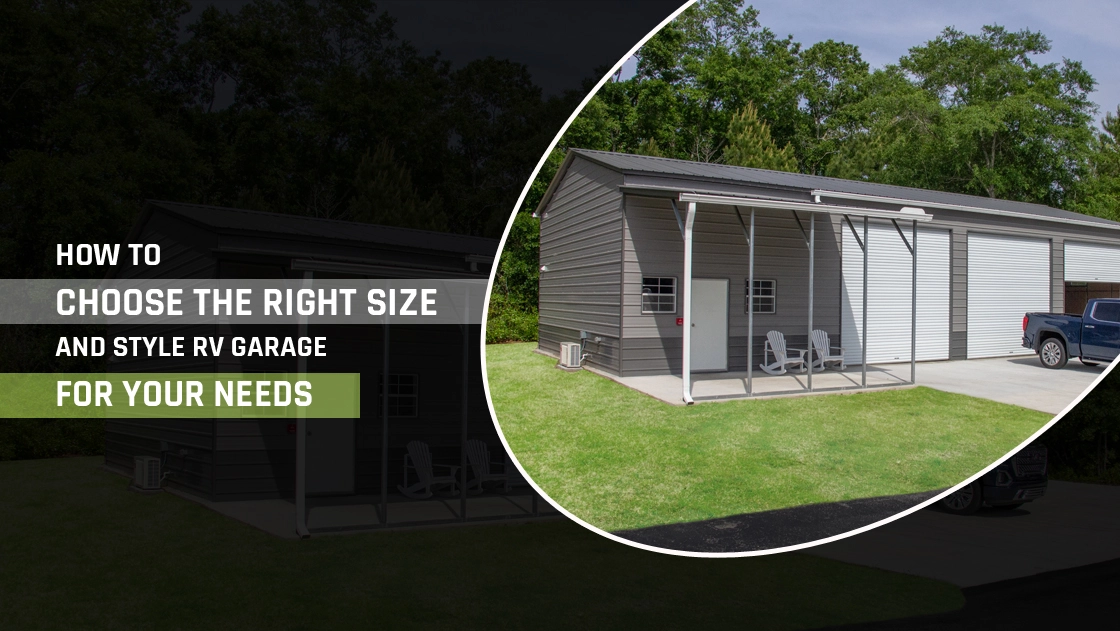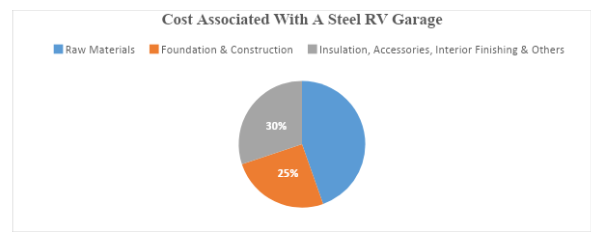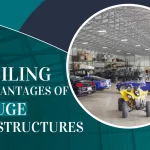How to Choose the Right Size and Style RV Garage for Your Needs
April 3, 2024
What rejoice you feel when you own an RV and drive it through the county’s freeways! Having an RV gives the convenience of moving around the states & finding new adventures. After your trip, you may have had a great time and made many memories, but your RV also needs some rest before joining you on your next adventure. It is essential to take care of your vehicle properly, just as you would take care of yourself, to protect it from the elements and extend its lifespan. So, let’s see how building an RV garage is right.
But Why Do You Need An RV Garage?
You may wonder why you should waste money on building an RV garage when you can use a fabric cover for the same job. The problem is – neither weather nor outdoor activities or prying eyes are within your control. Hence, for the safety of your expensive investment, you must consider a dedicated parking area for an RV.
Here’s How To Get The Right Size & Style When Building An RV Garage
Width
To determine the width of your garage building, you must first measure the width of your RV. Since RVs come in various sizes, their width will vary with class.
That’s, of course, due to the fact that state and federal laws do not allow vehicles to be wider than 8 ft. without a special permit. You can add 1.5 to 2.5 ft. on each side for opening and closing RV doors without bumping into walls.
- Class A: 8 ft.
- Class B: 8 ft.
- Class C: 8-9 ft.
Length
The same thing can be said about the length. You can add 2 ft. more to your RV length for a smooth maneuver. The general lengths of RVs are:
- Class A: 25 ft.
- Class B: 20 ft.
- Class C: 20 to 30 ft.
Height
Your vehicle must be able to enter and exit the prefab RV garage without rubbing against the ceiling.
Apart from the RV’s height, doors must also be considered. For instance, a roll-up door or a retractable door will also occupy ceiling space.
- Class A: 11 to 13 ft.
- Class B: 9 to 11 ft.
- Class C: 10 ft.
Some Top Selling Steel RV Garage Dimensions
| Types | Width x Length(in ft.) | Height(in ft.) |
| Vertical Roof RV Garage | 18 x 40 | 14 |
| Two-tone Vertical Metal Garage | 26 x 40 | 10 |
| Fully Enclosed Metal Garage Workshop | 24 x 41 | 15 |
| Vertical Metal Garage | 30 x 31 | 16 |
| Metal Garage with Lean-to | 30 x 41 | 12 |
RV Steel Building Doors
- Double Door or Single Door: You can choose traditional carriage-style doors or a modern, sleek-looking metal garage door with glass.
- Width of RV Door: 12 ft.
- Height of RV Door: 12 to 16 ft. tall
Various Styles Of Door For Your RV Garage Buildings
- Sectional Garage Door
- Roll-up Garage Door
- Sliding Garage Door
- Side hinge Garage Door
- Tilt-up Garage Door
- Over-roof Retractable Door
- Swing Out Garage Door
- Bi-fold Garage Door
- Canopy style Garage Door

Note: You can get a metal prefab RV garage from $2,000 onwards. The actual price will fluctuate with location, shipping, labor cost, and accessories/add-on features.
Do Not Forget The Driveway
You will need a broader driveway to ensure that the RV is easy to maneuver and does not hit anything or bushes when entering or exiting. Generally, the residential driveway is around 10 ft. wider, but for an RV, you will need a driveway that is at least 12 ft. wide and 20 ft. or more in length.
Consider Other Internal Factors
Insulation
You can opt for a fiberglass insulator with a range of R-values, costing between $0.30 to $1.50 per sq. ft. For aesthetic appeal, you can opt for insulated metal panels (IMPs), which come with an in-built insulator so that you don’t have to put extra effort into installing insulators.
Ventilation
It is best you choose a passive vent if the sole purpose of your RV steel building is to park the vehicle. Passive vents do not require power to run. Some common ones are – gravity vents, louvers, roof turbines, ridge vents, etc.
Electric & Plumbing
Lighting is crucial. You can add windows, skylights, solar tubes, etc., for natural light and LEDs for internal lighting. You can even add a motion sensor light so you don’t have to find the switch in the dark.
Floor
Your steel RV garage’s floor must be at an elevation that does not allow water to stand for long. Moisture is not a good friend of metal garages or RVs. Opt for a concrete floor, as it is sturdy and can bear more load than others.
Security
RVs are expensive for homeowners, so their security is essential. A metal garage will keep your RV away from prying eyes, changing weather, and extreme climates. Moreover, you can add locks and smart home security features to access your garage even when you are not home.
Permits
All garages need local authority approval before construction begins. If you need any design changes, you can make them at this stage. Viking Metal Garages recommends that you get your steel garage’s blueprint approved first, and then they proceed to buy the metal building.
Gutter & Downspout
We strongly suggest installing a gutter on your metal roof, especially if you live in an area with frequent rains and showers. A gutter will guide all water to a collection tank rather than collecting in front of your steel garage.
Any Storage Needs?
Consider getting a larger metal garage if you need storage space for batteries or other removable items. Then, you can easily install shelves, racks, and hooks to store items. A triangular rack can hold small items in the garage’s nook.
To Summarize The Above…
Steel RV garages are becoming popular because of their strength, durability, and low maintenance. Hence, investing in one is the best choice. Whatever your RV garage dimensions are, Viking Metal Garages offers customizable steel RV garages for every lot, size, need, and budget. With over 10+ colors, you can match your RV shelter with your existing property for that seamless curb. So, why wait? Call us today at (704)-741-1587 and get your prefab RV garage.

